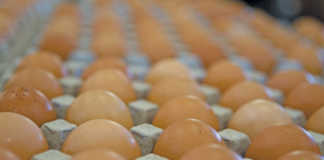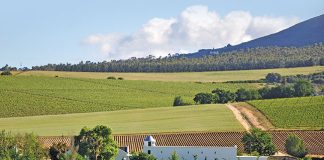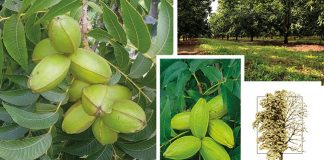Some 65km long and 45km wide, and situated about 2 400km off the south-east coast of Africa, the tropical island of Mauritius is home to nearly 1,2 million people.
For many years, Mauritius has had to import huge volumes of diesel to generate electricity. But in the late 1950s it discovered that bagasse, the dry, fibrous residue left after juice is extracted from crushed sugar cane stalks, can be used as a renewable fuel to generate electricity.
Even then, bagasse was cheaper than diesel for powering the sugar industry’s mills. It also burns cleaner. Over the years, the diesel price has increased substantially.
The government’s Central Energy Board (CEB) realised the value of having its sugar industry continuously improve its method of generating electricity for the island’s grid using bagasse and coal. It is now estimated that bagasse will be one of the island’s primary energy sources for electricity by 2020.
Enabling environment
A key role player in drafting Mauritius’s electricity co-generation policy is Dr Babou Rajpati. He is director of the island’s branch of BDO International, described as “a worldwide professional services network of public accountancy firms” with member companies in more than 100 countries.
He explains that, 23 years ago, Mauritius was only producing 40 million kilowatt hours (kWh) of electricity from a mix of coal and bagasse. Thanks to an enabling environment created largely by the Mauritius government, the island’s sugar industry has increased this to 250 million kilowatt hours.
The ultimate goal is 520 million kilowatt hours generated purely from bagasse, which fuels the boilers that provide steam to electricity-generating turbines. “In the late 1970s, the diesel used to generate our electricity was quite cheap and also easy to use,” says Dr Rajpati.
“Our CEB was wary of changing to using coal and bagasse, because this required a slower process to build up enough heat to generate steam for the turbines. Our sugar industry was also wary of the government-controlled CEB setting electricity prices which would make it impossible to cost-effectively co-generate electricity from bagasse, so it was content to continue using bagasse for its own electricity needs.
“This all changed in 1991, when the Gulf crisis put crude oil prices through the roof. The Mauritius government decided to invite the sugar industry to co-generate electricity for the national grid.” In 2010, 14,4% of Mauritius’s total electricity production of around 2 376 gigawatt hours was generated from bagasse, 40,7% from coal, 39,9% from diesel, 0,8% from kerosene and 4,2% from hydro-electric facilities.
As more efficient bagasse-to-electricity generation technologies are developed, Mauritius will gradually become less dependent on non-renewable energy sources and instead use more bagasse and hydro- and wind-generated electricity.
“Our government also likes the idea of using more bagasse to generate electricity because it is lowering our foreign debt for coal and diesel imports,” adds Dr Rajpati. “By efficiently using a resource that’s easily available to us, as a by-product of sugar milling, our sugar industry is now producing electricity more cheaply than the CEB.
“Also, because sugar cane is 70% water, 15% sugar and 15% fibre, our sugar mills extract most of their water needs from the cane itself and don’t have to rely too much on the island’s water in the milling process.
“In fact, our sugar mills are almost water neutral, because they’ve refined their processes to the point where they use 0,8m3 to 1m3 of water to process 1t of sugar cane, and the water comes from the cane.”
Producing electricity
Daniel Mamotte is the operations manager for the Compagnie Thermique de Belle Vue Ltée (CTBV), a coal and bagasse electricity co-generation facility. Commissioned in 2000, it cost 2,4 billion Mauritian rupees (about R667 million at October 2011 rates).
It has a 71,2MW gross production capacity from two turbines each capable of generating 35,6MW from about 250 000t of bagasse and 170 000t of coal a year. It caters to the needs of the national grid and the Belle Vue Mauricia Sugar Mill. “Mauritius’s electricity demand is growing by 5% a year, so our industry needs to keep up,” says Daniel. “At CTBV, the high pressure and temperature power cycle can generate 120kWh of surplus electricity from 1t of sugar cane, after meeting the sugar mill’s steam and electricity requirements.
“In the 1980s, sugar mills could only produce 20kWh of surplus electricity from 1t of sugar cane. Our boilers currently produce 525°C steam at a rate of 130t/hour from coal and 140t/hour from bagasse.” He adds that 1t of sugar cane produces around 300kg of bagasse. When burnt, this leaves 3,5% ash. “We mix this ash with other by-products from our operations to make fertiliser for our cane fields.”
CEB load analyst Iqbal Dreepaul says using a diverse range of fuel sources and methods for Mauritius’s electricity production spreads supply risk. During the January to June non-sugar milling season, the sugar mills don’t need electricity, he notes. This extra power then becomes available to the national grid.
“But to increase our bagasse-generated electricity we’ll also need higher-fibre sugar cane varieties to be developed,” continues Iqbal. “It’s up to the sugar industry to motivate for research into this. Another option is to improve the efficiency of our coal/bagasse power plants.”
Integrating energies
Gérard Chasteau de Balyon, chief strategy officer (CSO) for large sugar milling company Omnicane, is playing a major role in developing the sugar industry’s ability to produce more electricity.
He says the industry would likely have struggled to adapt to the sugar world’s changing conditions, if it hadn’t switched from producing raw sugar to producing Refined EEC Grade II sugar, added electricity production and been allowed by government to sell power to the national grid. It might even have gone bust, he adds.
“Our motto at Omnicane is ‘integrating energies’. Everything we try to do is centred around looking further and wider at how we can add as much value to sugar cane as possible, especially when it comes to producing green energy,” says Gérard.
“For every ton of sugar cane we crush at our mill we sell 100kW of electricity to the grid. To do this required very heavy investment in our mill and co-generation plant. But without the plant we might have closed down our mill by now. Diversification and value-adding are key to a sustainable sugar industry.”
Co-generation needs to be handled properly, because a country’s economy depends on electricity, he warns. “If production is inconsistent, as is often the case with traditional sugar mills, the sugar industry will fall out of favour with the public and the government.”
Daniel concludes, “Our sugar industry has evolved into a sugar cane industry because of the diversity of our products. In addition to raw sugar and molasses, our new dominant products are electricity, ethanol, and special and refined sugars.”
Diversification is increasing profit, and to ensure all stakeholders in the industry from the ground up benefit, the Mauritius government will soon be announcing a profit-sharing programme.
The plan is for 25% of profits in a particular sugar milling/co-generation operation to go to strategic partners, 50% to the milling company and 25% to company workers and farmers who supply the cane.
Producing electricity
Daniel Mamotte is the operations manager for the Compagnie Thermique de Belle Vue Ltée (CTBV), a coal and bagasse electricity co-generation facility. Commissioned in 2000, it cost 2,4 billion Mauritian rupees (about R667 million at October 2011 rates).
It has a 71,2MW gross production capacity from two turbines each capable of generating 35,6MW from about 250 000t of bagasse and 170 000t of coal a year. It caters to the needs of the national grid and the Belle Vue Mauricia Sugar Mill.
“Mauritius’s electricity demand is growing by 5% a year, so our industry needs to keep up,” says Daniel. “At CTBV, the high pressure and temperature power cycle can generate 120kWh of surplus electricity from 1t of sugar cane, after meeting the sugar mill’s steam and electricity requirements.
“In the 1980s, sugar mills could only produce 20kWh of surplus electricity from 1t of sugar cane. Our boilers currently produce 525°C steam at a rate of 130t/hour from coal and 140t/hour from bagasse.” He adds that 1t of sugar cane produces around 300kg of bagasse. When burnt, this leaves 3,5% ash. “We mix this ash with other by-products from our operations to make fertiliser for our cane fields.”
CEB load analyst Iqbal Dreepaul says using a diverse range of fuel sources and methods for Mauritius’s electricity production spreads supply risk. During the January to June non-sugar milling season, the sugar mills don’t need electricity, he notes. This extra power then becomes available to the national grid.
“But to increase our bagasse-generated electricity we’ll also need higher-fibre sugar cane varieties to be developed,” continues Iqbal. “It’s up to the sugar industry to motivate for research into this. Another option is to improve the efficiency of our coal/bagasse power plants.”
Integrating energies
Gérard Chasteau de Balyon, chief strategy officer (CSO) for large sugar milling company Omnicane, is playing a major role in developing the sugar industry’s ability to produce more electricity.
He says the industry would likely have struggled to adapt to the sugar world’s changing conditions, if it hadn’t switched from producing raw sugar to producing Refined EEC Grade II sugar, added electricity production and been allowed by government to sell power to the national grid. It might even have gone bust, he adds.
“Our motto at Omnicane is ‘integrating energies’. Everything we try to do is centred around looking further and wider at how we can add as much value to sugar cane as possible, especially when it comes to producing green energy,” says Gérard.
“For every ton of sugar cane we crush at our mill we sell 100kW of electricity to the grid. To do this required very heavy investment in our mill and co-generation plant. But without the plant we might have closed down our mill by now.
Diversification and value-adding are key to a sustainable sugar industry.” Co-generation needs to be handled properly, because a country’s economy depends on electricity, he warns. “If production is inconsistent, as is often the case with traditional sugar mills, the sugar industry will fall out of favour with the public and the government.”
Daniel concludes, “Our sugar industry has evolved into a sugar cane industry because of the diversity of our products. In addition to raw sugar and molasses, our new dominant products are electricity, ethanol, and special and refined sugars.”
Diversification is increasing profit, and to ensure all stakeholders in the industry from the ground up benefit, the Mauritius government will soon be announcing a profit-sharing programme. The plan is for 25% of profits in a particular sugar milling/co-generation operation to go to strategic partners, 50% to the milling company and 25% to company workers and farmers who supply the cane.
Email Dr Babou Rajpati at [email protected] or [email protected].
Email Daniel Mamotte at [email protected].
Email the Central Electricity Board at [email protected].
Email Gérard Chasteau de Balyon at [email protected].
Contact Johann van der Merwe of the South African Sugar Association at 031 508 7025, or email [email protected].













